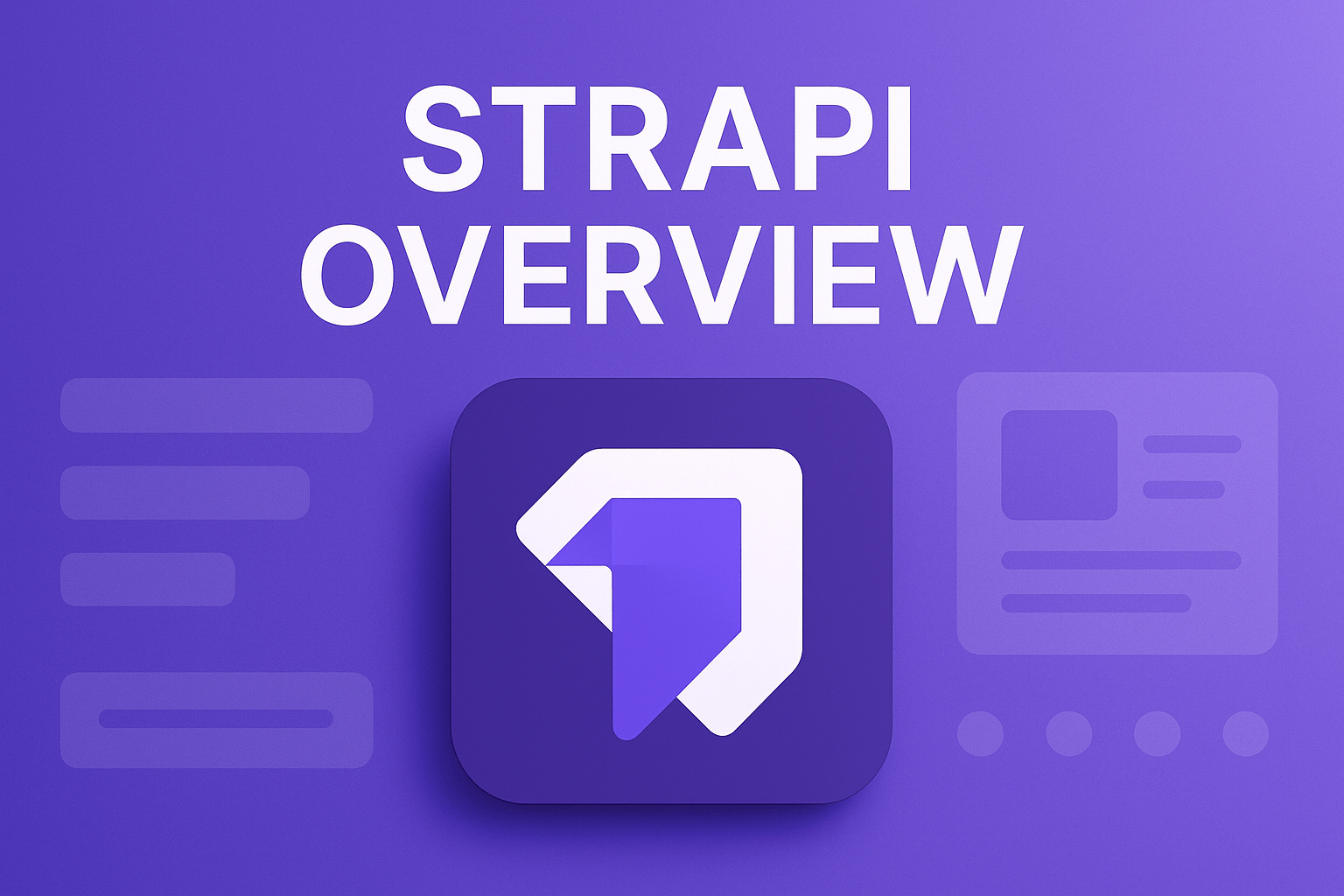
In this article, we’ll see Strapi Overview.
Table of Contents
What is Strapi
Strapi is the next-gen headless CMS, open-source, javascript, enabling content-rich experiences to be created, managed, and exposed to any digital device.
It is JavaScript, extensible, and fully customizable. It enables developers to build quick projects by providing a customizable API and allowing them to use their favorite tools.
It is a flexible CMS whose admin panel and API are extensible – and whose every part is customizable to match any use case. It also has a built-in user system to manage in detail what the administrators and end users have access to.
Benefits
- Headless Architecture: It follows a headless architecture, decoupling the frontend presentation layer from the backend content management layer. This approach allows developers to create and manage content independently of the presentation, enabling seamless integration with various frontend technologies like React, Vue.js, or Angular. The headless architecture offers the flexibility to deliver content to multiple channels, including websites, mobile apps, and IoT devices.
- Intuitive Content Modeling: It provides an intuitive and user-friendly interface for content modeling. The platform offers a visual editor to define content types, allowing developers to structure and organize content with ease. With custom fields, relationships, and validations, developers can create complex data structures that align with their specific content requirements. Strapi’s content modeling capabilities empower developers to build dynamic and robust applications.
- API-First Approach: It adopts an API-first approach, making it effortless to expose content through a flexible RESTful or GraphQL API. The platform automatically generates APIs based on the defined content types, enabling developers to fetch, create, update, and delete content programmatically. The API-first approach simplifies integration with any frontend technology, giving developers the freedom to create engaging and interactive user experiences.
- Customizable Admin Interface: It provides a customizable admin interface that allows developers to tailor the CMS backend to their specific needs. With an intuitive drag-and-drop builder, developers can create custom views, menus, and content management workflows. This flexibility ensures a seamless content editing experience for non-technical users, empowering content teams to manage and update content effortlessly.
- User Permissions and Roles: It offers granular user permissions and role-based access control, ensuring that content is securely managed. Developers can define user roles and assign specific permissions, controlling who can create, edit, publish, or delete content. This level of control enhances content governance and enables organizations to maintain strict access control across their content management workflows.
- Extensible Plugin System: It features a robust plugin system that allows developers to extend the CMS functionality with ease. The platform offers a wide range of community-developed plugins, covering various requirements such as image optimization, SEO, user authentication, and more. Developers can leverage these plugins or create custom ones, tailoring Strapi to their specific project needs and accelerating development timelines.
- Scalability and Performance: It is designed to handle high-traffic and large-scale applications. With its ability to horizontally scale and support clustered deployments, It ensures optimal performance and reliability. Developers can distribute the workload across multiple instances, providing the scalability required to accommodate growing content demands and increasing user traffic.
- Active Community and Support: It benefits from a vibrant and supportive community of developers and contributors. The active community provides timely assistance, shares best practices, and contributes to the continuous improvement of the platform. Strapi’s community support ensures that developers have access to a wealth of knowledge and resources, making their experience with the CMS enjoyable and productive.
Installation :
You must have already installed Node.js (v14, v16, and v18)
1). Run the “npx create-strapi-app@latest strapi-app” command in your terminal for Strapi installation
2). It will ask for the installation type as follows. Select the Quickstart option and it will automatically proceed with the further installation process.
Quickstart (recommended), which uses the default database (SQLite)
Custom (manual settings), which allows choosing your preferred database
3). Run the “npm run develop” command to run your application
You can follow the below instruction video for the whole installation process :
Advantages and Disadvantages
Advantages :
- Easy to use
- Scalable and can handle a high volume of traffic
- Free and Open-Source
- Easy third-party integration
Disadvantages:
- Lack of typescript support
- Continuous updates
- Time-consuming migration procedure
Reference :
Strapi revolutionizes content management with its headless architecture, intuitive content modeling, API-first approach, customizable admin interface, and extensible plugin system. Whether you’re building a website, a mobile app, or an IoT application, Strapi provides the tools and flexibility to efficiently manage and deliver content. Embrace the power of Strapi and elevate your content management capabilities to new heights. I hope this article helps!